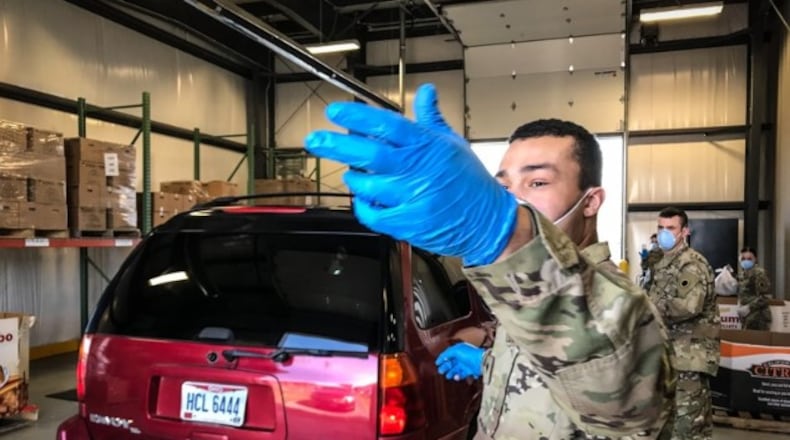Ohio almost matched its record for daily hospitalizations, with 213 newly hospitalized patients reported. The record of 216 was set on Oct. 20. Throughout the pandemic, Ohio has tallied 19,615 total hospitalizations.
On Tuesday, there were 1,960 COVID-19 patients in hospital across the state compared to 1,246 on Oct. 21, according to ODH. Southwest Ohio has also continued to watch hospitalizations increase, going from 386 on Oct. 21 to 575 on Election Day.
Coronavirus patients account for 8.23% of southwest Ohio’s hospital beds, with non-COVID-19 account for 63.07% As of today, the region still has 28.7% of its hospital beds available.
Gov. Mike DeWine called for unity after the election ends and asked Ohioans to come together to fight the coronavirus pandemic as he voted Tuesday morning in Cedarville with his wife Fran.
“Tomorrow morning, when we wake up, it’s going to be the time to put this behind us, come together as Ohioans, come together as Americans, because today, unlike most election days, we are at war,” he said. “We face a common enemy. And that enemy does not care if we voted for the President Donald Trump, or former vice president Joe Biden."
Throughout October and into November, Ohio has continue to see coronavirus case and hospitalizations rise, setting and breaking multiple records.
The state’s positivity rate has also continued to climb with a seven-day average of 7% as of Sunday, the most recent day data was available. That day, the state’s daily positivity rate was at 8.4%
Ohio reported 25 additional ICU admissions Tuesday, bringing the total to 3,924.
Deaths increased by 33 on Tuesday for a total of 5,373.
Local public health officials say they are very concerned about the increase of COVID-19 cases across the state.
Public Health – Dayton & Montgomery County is seeing the infection spread in many places, but especially between people in their homes and among groups of family members and friends, said Dan Suffoletto, an agency spokesman.
Citizens must continue to take precautions and follow safety measures even around friends and family members, he said.
“This is not the time to be hosting or going to parties at other people’s homes,” he said.
Public health is concerned that the arrival of colder weather means more people will move their social activities indoors, which will result in more cases, Suffoletto said.
He said everyone needs to work together to stop the spread of the virus by wearing face masks, staying at least 6 feet apart and washing their hands frequently.
Suffoletto said cases are not rising because of increased testing. He said testing only identifies cases that already exist.
Greene County is a red county at level 3, which means it has very high exposure and spread, said Laurie Fox, public information officer with Greene County Public Health.
Between Oct. 26 to Nov. 1, Greene County had 372 new COVID-19 cases, with a daily high of 74 cases, Fox said.
That was up from 348 new cases between Oct. 19 to 25, with a one-day high of 61 cases, she said.
Greene County added 69 new reported cases on Tuesday, a day after adding 75.
“Our numbers have been climbing,” Fox said.
Fox said the virus is spreading because many people have “pandemic fatigue”and have let their guard down and have become careless and complacent.
She also said there’s a ton of “distraction and noise” and false information has resulted in people not taking precautions that will keep themselves and their families safe.
Some people believe conspiracy theories, she said, while others think the threat of infection is fake or has been politicized and is not a serious threat.
About 20 people are dying for every 1,000 people who have a positive COVID-19 test, and that definitely could continue, she said.
Rising case numbers are absolutely preventable if people would just listen to public health experts and take steps to protect themselves, Fox said.
“We are seeing community spread with baby showers, wedding receptions, restaurants,” she said. “People are gathering together with their friends and not social distancing and not wearing masks.”
The community can get this problem under control, but it will require everyone making responsible decisions every day, she said.
Mask wearing helped reduce the rate of new infections over the summer, but people became less vigilant and cases started rising again, she said.
“I think we can turn it around, but it takes everyone following those protocols,” she said. “But I don’t know that we will turn it around.”


